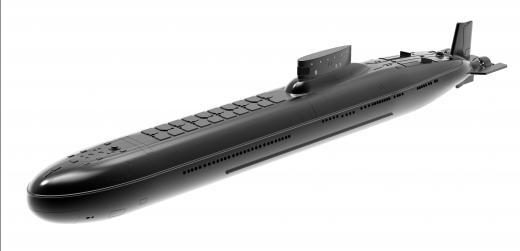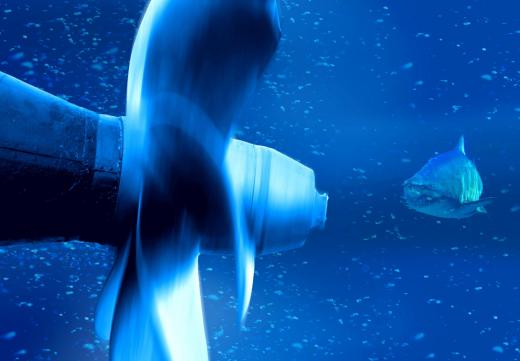What are Sonar Hydrophones?
 Mary McMahon
Mary McMahon
Sonar hydrophones are the underwater equivalent of microphones. They act as a passive listening device which is capable of converting acoustic pulses into electrical signals, which can be read by a sonar operator. Sonar hydrophones are widely used in the military and civilian world, and are an integral part of the sonar system used to navigate ships at sea. Generally, sonar hydrophones are very durable and capable of years of use.
Sonar itself works by sending out pulses of sound energy underwater which bounce off objects in their path, sending back an acoustic picture of the terrain. Sonar has been used since the turn of the twentieth century to assist with navigation, finding fish, and locating objects on the ocean floor. Sonar technology has only become more advanced since then, allowing operators to see a much brighter and clearer picture of what is in the ocean around them. In addition to improving the safety of nautical navigation, improved sonar has paved the way to many groundbreaking undersea discoveries.

Sonar hydrophones are the listening part of the sonar system. Some sonar hydrophones are transducers, which means that they emit a signal and then switch to passive mode to detect it, while others are simply passive devices towed behind a ship or submarine to listen for acoustic energy. Many sonar hydrophones are very precise, and capable of picking up sound waves in a wide range of frequencies.

Positioning of sonar hydrophones for optimum pickup does require some skill. When a ship is in motion, its propellers cause a phenomenon called cavitation, where pockets of air form in the water as the propellers turn. Many ships cavitate so distinctly that the type of ship can be identified by the type of cavitation produced. These pockets can form and collapse very quickly, and have been known to cause damage to devices caught in them. Cavitation also causes a great deal of noise, which can interfere with sonar hydrophones. As a result, they are often towed in an array well clear of the propellers to prevent sound pollution and damage.

Sonar hydrophones are also used by some geologists, to listen for seismic changes underwater which may be reflected by changes in water pressure or particular ambient noises. In this application, sonar hydrophones are towed above the sea floor in very large streamer arrays. Marine biologists integrate sonar hydrophones into their scientific observations as well, listening for various underwater species with towed sonar hydrophones.
AS FEATURED ON:
AS FEATURED ON:













Discuss this Article
Post your comments